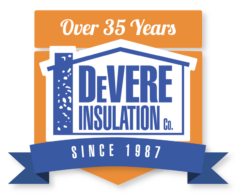In Baltimore’s charming neighborhoods filled with historic row houses, homeowners expect both character and comfort. Yet even the most beautiful home can become a source of frustration if it’s drafty, unevenly heated, or wastes energy. For builders, these comfort issues lead to dreaded callbacks—a costly problem that damages reputations and eats into profits. But what if there was a way to build it right the first time?
The Comfort Equation: Comfort + Efficiency = Happy Homeowners (and Builders)
Home comfort and energy efficiency go hand in hand. When a home is efficient, its residents are comfortable. This simple equation leads to satisfied homeowners and fewer callbacks for builders. By investing in quality construction upfront, you can save money and time in the long run.
The Maryland Builder’s Guide to Callback Prevention
 Building Science: Your Foundation for Success
Building Science: Your Foundation for Success
Understanding the home as a system is crucial. Heat flow, air leakage, and moisture management are all interconnected. By incorporating building science principles from the design phase, you’ll create a solid foundation for success. This knowledge helps you adapt to Baltimore’s climate challenges, from humid summers to frigid winters.
Subcontractors: Choose Your Team Wisely
Your subcontractors play a vital role in achieving your goals. Remember, proper insulation installation is critical because it’s not just about the product, but the technique.
Ensure your subs are properly trained in building science and up-to-date on the latest practices. At DeVere Insulation, we pride ourselves on our building science expertise and commitment to ongoing education.
Insulate and Air Seal: The Dynamic Duo of Comfort
A tight building envelope is the cornerstone of an energy efficient home and keeps conditioned air in and unconditioned air out. Proper installation of insulation and meticulous air sealing create a more comfortable interior and decrease builder callbacks. Don’t overlook those hidden gaps around pipes, electrical outlets, and in the attic–they all add up.
HVAC: Sized Right and Optimized
A well-insulated and air sealed home requires less from its HVAC system. Avoid oversized systems that lead to uneven heating and cooling, when a smaller HVAC system will suffice. Proper ductwork design is essential for optimal airflow, energy efficiency, and comfort.
Ongoing Evaluation: Don’t Just Build, Verify
Use blower door tests and other diagnostic tests to identify leaks and improve airtightness. Involve certified HERS Raters to evaluate and fine-tune your home’s performance throughout the construction process.
The Baltimore Rowhouse Challenge: Unique Considerations

- Shared walls require extra attention to soundproofing and insulation.
- Older homes often need specialized solutions for insulation and air sealing thanks to their age and existing conditions.
- Limited space demands efficient use of every square foot for both comfort and functionality.
The Financial Impact: Callbacks vs. Investment
Calculate the true cost of callbacks, including time, labor, materials, and reputation damage. Now compare that to the investment in building science and proper installation techniques. Energy efficient homes command higher prices and lower utility bills, making them attractive to buyers and helping your client understand the value you provide.
Building Science Pays Off
A small investment in building science knowledge and quality construction upfront can save you thousands in the long run. By reducing callbacks, you’ll boost your reputation and create homes that truly delight.
The DeVere Insulation Advantage: Maryland Building Science
We understand the unique challenges of building in this climate and how building science impacts project success. Our comprehensive insulation and air sealing services are backed by the latest knowledge and energy-certified professionals. We’re committed to helping you create comfortable, efficient homes that stand the test of time.
The Baltimore Builder’s Blueprint for Success

Remember, a job site focused on quality and efficiency leads to happy homeowners and successful builders. Contact us today for answers to all your building science and insulation questions. We are here to help ensure your new home project is ready for move-in day.

 Building Science: Your Foundation for Success
Building Science: Your Foundation for Success